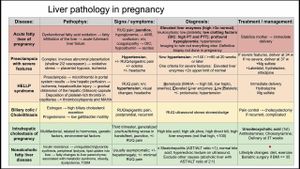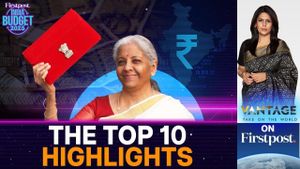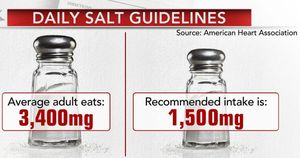Ontario is gearing up for a snap provincial election on February 27, 2025, with the political scene charged with speculation and strategic maneuvering. Premier Doug Ford has called the election earlier than many anticipated, thrusting the campaign for the Progressive Conservatives (PC) front and center as they currently appear to enjoy significant voter support.
Recent polling data from January 2025 paints an optimistic picture for the PCs, as they reportedly enjoy up to 52% support among decided voters. Comparatively, the opposition seems to struggle: the Ontario Liberals, led by Bonnie Crombie, are trailing significantly at around 23%, followed closely by the NDP under Marit Stiles, who are hovering near the 18% mark. This commanding lead for the PCs raises questions about the potential for either a commanding majority or perhaps even historic electoral wins, with projections ranging from a slim majority to as many as 108 seats.
Grok's analysis highlights the reasons behind Ford's popularity, which appears to be bolstered by his strategic timing of the election aimed at maximizing the political momentum, along with public sentiment toward economic stability. Many voters, facing the uncertain repercussions from international trade threats posed by U.S. President Donald Trump, seem to resonate with Ford’s focus on mitigating economic risks.
Meanwhile, the opposition has expressed mounting concern over what they perceive as Ford’s lack of clear plans as Canada braces for impacts from U.S. tariffs. Crombie has criticized Ford, claiming, "Where's the rest of the plan? Where's the stimulus for our industries?" Her comments reflect public anxiety over the impending trade conflict. With tariffs expected to hit Canadian goods, Crombie argues Ontarians need more than just surface-level initiatives.
Stiles has echoed similar sentiments, calling for more localized solutions and diversification of the economy to insulate against external pressures. The opposition leaders face the challenge of galvanizing their support bases to wrestle back momentum, especially as voter anxiety about current economic challenges continues to mount.
Beyond the tariffs and trade issues, the parties have differing strategies for addressing economic anxieties, which have become increasingly pressing. Crombie aims to address rising costs of living and housing, asserting these are key voter concerns. Similarly, Stiles plans to sharpen her focus on healthcare and social equity to bridge the gap with voters.
Despite the frenetic pace of the campaign, both Crombie and Stiles contend Ford’s efforts to justify holding the election so far before schedule is unjustified, arguing he already has ample mandate to proceed with economic stimulus packages. Yet, Ford insists on his ability to operate effectively as premier even as he campaigns, demonstrating his confidence heading toward the February election.
Ford's promise to halt the sale of around $1 billion worth of American products at the LCBO is viewed as both strategic and opportunistic. The Premier insists it's part of necessary measures to shield Ontarians from substantial economic fallout. He notes this decision aligns with other provinces, including British Columbia and Quebec, taking similar actions to combat the tariff threat.
The fallout from the looming trade war has filtered down, affecting even the local elections, where key issues like access to family doctors and healthcare can’t seem to break through the noise, as economic stability takes center stage. Crombie and Stiles have both pushed back against Ford's leadership style and have warned the electorate about the limitations of his caretaker government during this campaign period.
The political dynamic will continue to evolve rapidly over the coming weeks as debates, campaign promises, and voter sentiment shifts come to the forefront. While the PCs lead by Ford appear to have the upper hand, both the Liberals and NDP could shift the race's dynamic if they can effectively engage voters and present compelling narratives around their platforms.
Polling data suggests voters may be inclined toward the PCs, but as political analysts know well, electoral outcomes can be unpredictable. With just days until the election, Ontario's political scene is poised for unexpected turns and shifts, with candidates scrambling for voter attention and support.
The heightened stakes of this election reflect broader concerns beyond provincial politics, where economic tensions and trade wars could redefine community livelihoods and economic landscapes for years to come.
Voter turnout has also become a matter of key concern, as Ontario saw record low participation rates during the last election. Will this time see a renewed interest from citizens eager for change?
All eyes will be on the electorate on February 27 as they head to the polls to make their voices heard. With emotions running high and issues at stake more significant than ever, the upcoming election is sure to be one of great consequence for Ontario's future.



